Having a fruit-bearing cherry tree in your garden can be highly beneficial not only because you’ll have access to these delectable stones fruits, but also because cherry-picking can be a fun activity to do with your loved ones. Aside from that, the deep red cherries can inject vibrance into the garden. However, the question stands—are cherry trees messy? Can you plant them in your garden? We have researched answers to find out.
Fruit-bearing cherry trees can be quite messy if you don’t pick the ripe fruits right away when they grow. This is because overripe fruits tend to fall into the ground, making the garden messy. Birds can also find a way to pick on the fruits until they fall, so it’s best to collect ripe fruits so you can enjoy them and not face the hassle of cleaning the grounds.
Cherry trees—both flowering and fruit-bearing have a lot of cultural significance. Knowing which types of cherry trees are available and compatible in your area are essential if you want one in your garden. You also need to determine whether you have enough time and resources to take care of them. Keep reading below to learn more about growing and taking care of different varieties of cherry trees.
![An orchard of cherry trees in Westfield, New York. - Are Cherry Trees Messy? [Deciding If You Should Plant One In Your Yard]](https://gardentabs.com/wp-content/uploads/2023/04/An-orchard-of-cherry-trees-in-Westfield-New-York.-Are-Cherry-Trees-Messy-Deciding-If-You-Should-Plant-One-In-Your-Yard.png)
How to Know Your Garden is Ready For a Cherry Tree
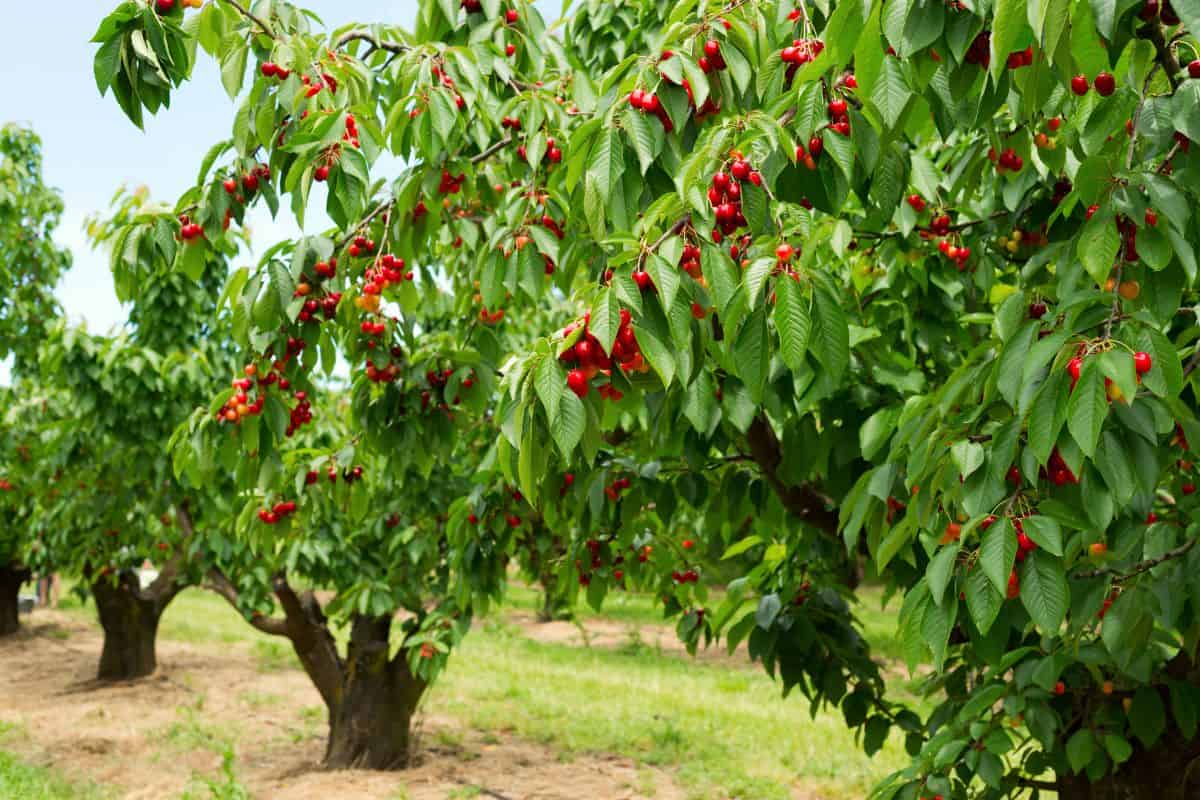
Cherry trees are ideal for the garden since they are one of the highest-yielding fruit trees. You can have cherries available whenever you want them, and both the fruit-bearing and flowering varieties provide year-round appeal.
However, how do you know your garden is ready for a cherry tree? Here are top considerations to think about:
Access to full sun
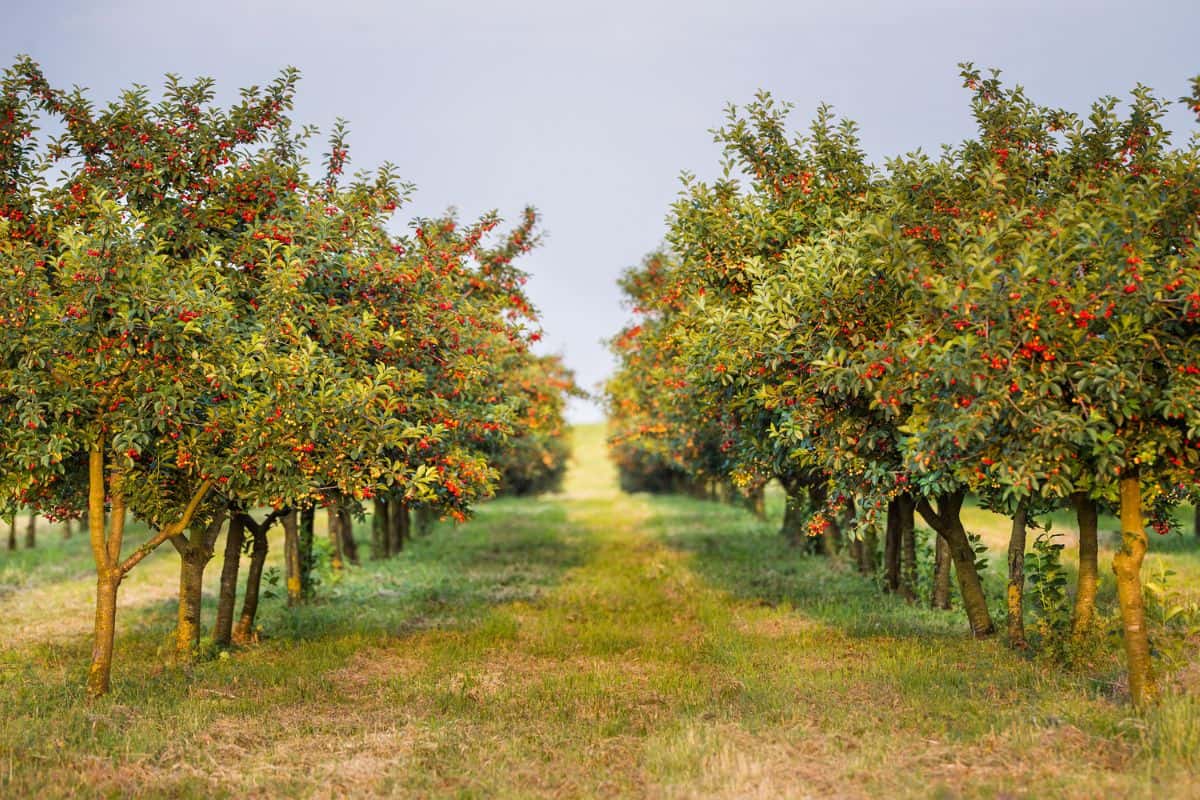
Fruit-bearing cherry trees require access to full sun in order to produce these delicious fruits.
This is a requirement for almost all fruit trees since they won’t be able to grow fruits without enough energy that can only be gotten from sunlight.
Unless you are willing to have a cherry tree that only shows green foliage without any vibrant red cherries dotting it, you are better off with a cherry blossom tree.
Do cherry blossom trees need full sun?
Cherry blossom trees, on the other hand, do not require full sunlight. They can thrive on partial shade since they don’t bear fruit. The only purpose of cherry blossom trees is to provide visual appeal with their white or bright pink blooms.
Quality of your soil
Cherry trees can tolerate almost any soil type, so this is a good thing if you don’t exactly have top quality soil yet. As with most fruit-bearing trees, cherry trees thrive on well-drained soil, although they prefer loam soil.
Make sure they are planted deep into the soil so they can absorb all the water and nutrients available for them to produce fruit.
What soil do cherry blossoms need?
Cherry blossoms need a moist but well-drained loam soil in order to fully bloom. They are not highly tolerant of low-quality soil unlike fruit-bearing cherry trees.
Hardiness Zone
Making sure you are within the USDA zones for cherry trees is highly essential so you won’t have a hard time growing them. Cherry trees grow best in USDA zone 4-7, so you can plant cherry trees relatively easily if you are within these areas.
For cherry blossom trees, you need to be in USDA zone 5-8 before you can plan on having them in your garden.
Garden Space
As always, an adequate garden space is very important if you want to grow any tree, but more so if you want a cherry tree in your garden. Fruit-bearing cherry trees can grow up to 25 feet, so you need to make sure you have the space to accommodate that.
On the other hand, cherry blossom trees grow up to 40 feet.
These huge, majestic trees will need all the space it can get. You’ll also enjoy them more during the spring when their blossoms turn bright pink if they can grow to their full height.
Cherry trees vs. Cherry Blossom Trees -- Is there a difference?
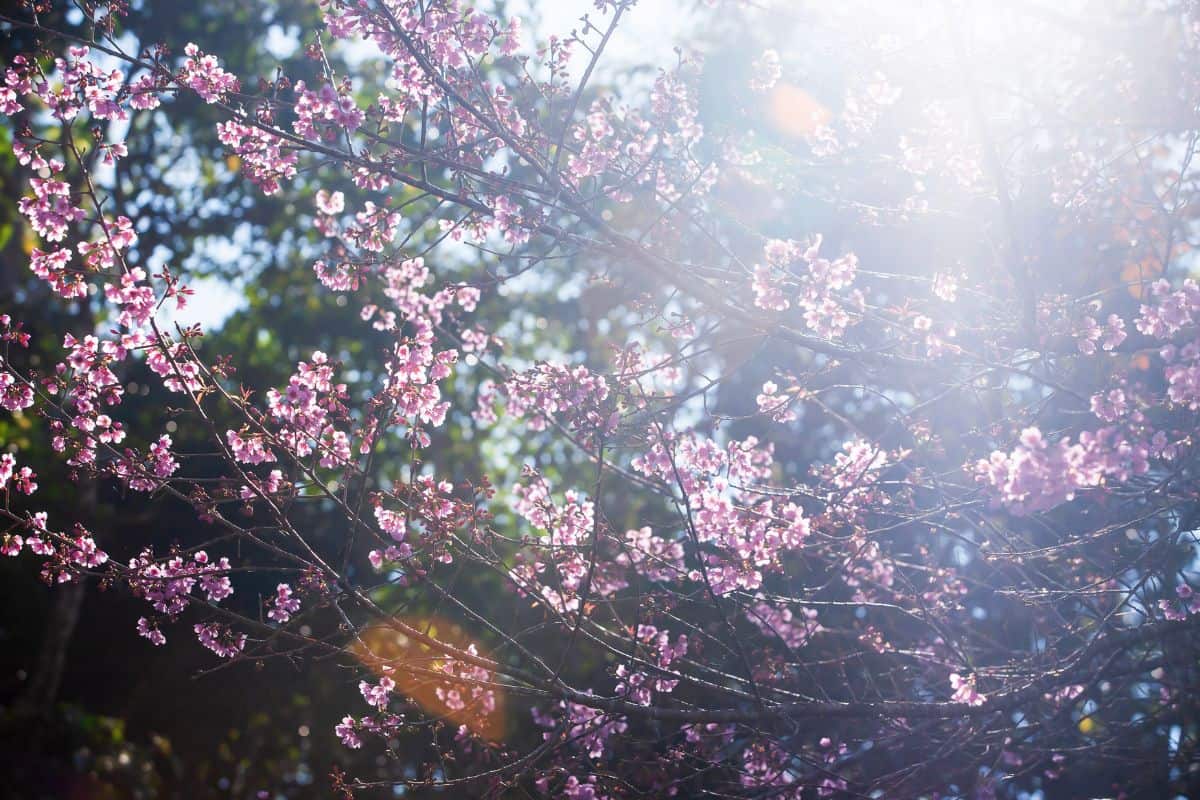
Although they both have the name “cherry”, there are key differences between them. For instance, fruit-bearing cherry trees function as just that—to bear fruit. All the nutrients are geared towards growing them, so you may not see flowers on their foliage often.
On the other hand, cherry blossom trees utilize all their resources on their flowers. The bright pink foliage can make a garden look vibrant, more rich with life, more visually appealing, and more magical.
Since cherry blossom trees focus all their energy on growing the best-looking blooms, their fruit—which are often small and unnoticed—has a sour and unfavorable taste although they are not poisonous.
Despite their differences, both cherry trees and cherry blossom trees come from the genus Prunus, which also house other fruit trees such as plum trees and peach trees.
Who eats the fruits from cherry blossoms?
Since cherry blossoms come from the genus Prunus, they also produce a sort of stone fruit. It’s edible, but it doesn’t taste good so it’s not recommended that you eat them.
The fruits that cherry blossom trees produce are normally eaten by birds since they are easily accessible and palatable to them.
However, the flowers from cherry blossom trees are actually used as ingredients for tea and pastries, which is why you can sometimes find cherry blossom-flavored chocolates in the market.
The foliage is sometimes pickled in Japan, but you need to be careful not to eat the cherry pips since they can be deadly.
How long do cherry trees last?
All cherry trees tend to have a short lifespan, which is a shame since both fruit-bearing cherry trees and cherry blossom trees have a lot of visual and functional benefits.
Cherry trees only normally last for 15-30 years, which is a young age to wither for trees in general.
The bright pink blooms through which cherry blossoms are famous for only lasts for a month.
The best time to observe them is about 4-7 days after the peak of their bloom since that’s when they are at their best color.
After the cherry blossoms bloom, the pink petals drop off and the tree becomes a dull shade of green or white until next spring.
Where are cherry trees typically planted?
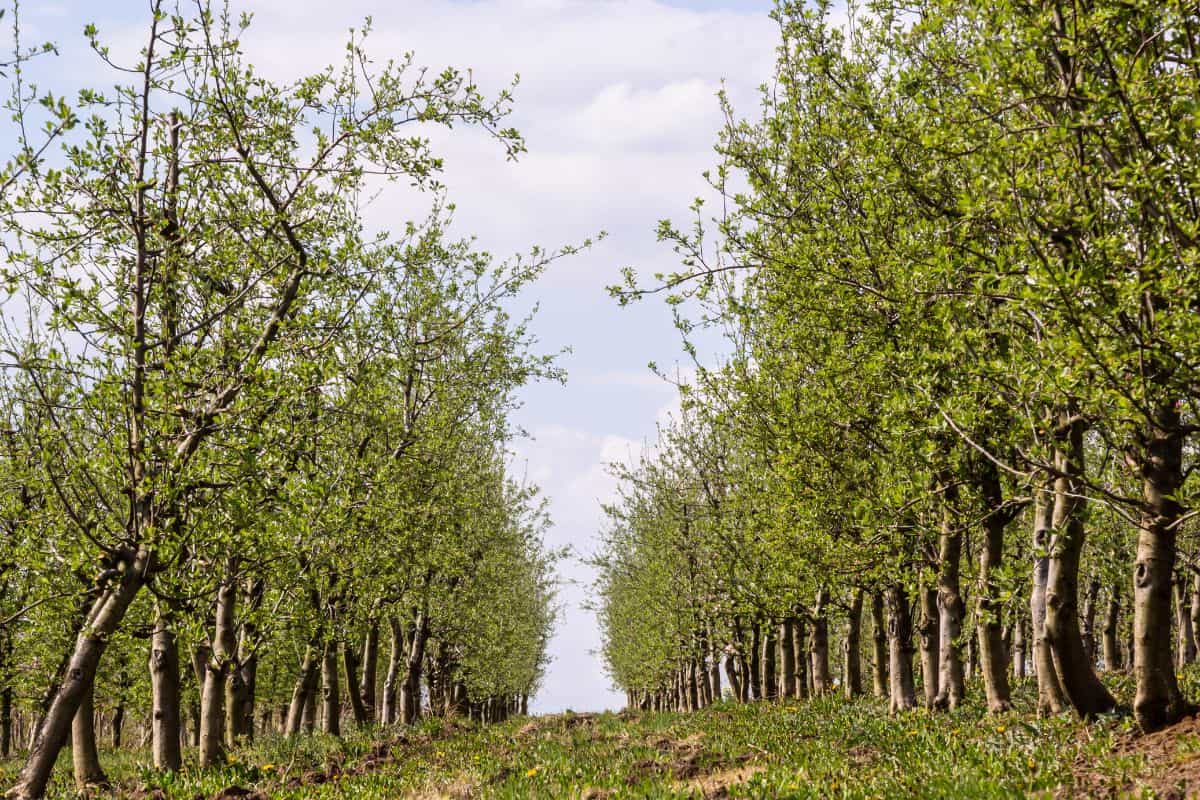
Fruit-bearing cherry trees can be planted in a garden with adequate space and access to sunlight. If you’re planting more than one cherry tree, you need to space them properly so air can be circulated properly between them.
Ideally, they should be at least 4-8 meters apart to avoid having clashing branches and to prevent the growth of mold and mildew which can happen if the moisture gets trapped between the leaves and branches.
Cherry blossom trees, on the other hand, are often planted in parks and public gardens where the space can handle their mature size.
You can plant a cherry blossom tree in your garden if you have enough space. However, if you don’t have enough space, you can try growing a dwarf cherry blossom tree which only grow up to 10-15 ft at maturity.
Read: What To Plant Under Cherry Trees? 11 Great Suggestions!
When should you plant cherry trees?
It is ideal to plant cherry trees during late fall or early spring. This is because the soil has already softened and has garnered enough moisture to accommodate a fruit tree.
The same can be followed for container-grown cherry blossom trees, but it is best to plant flowering cherry blossoms in early fall.
How long will it take for cherry trees to grow?
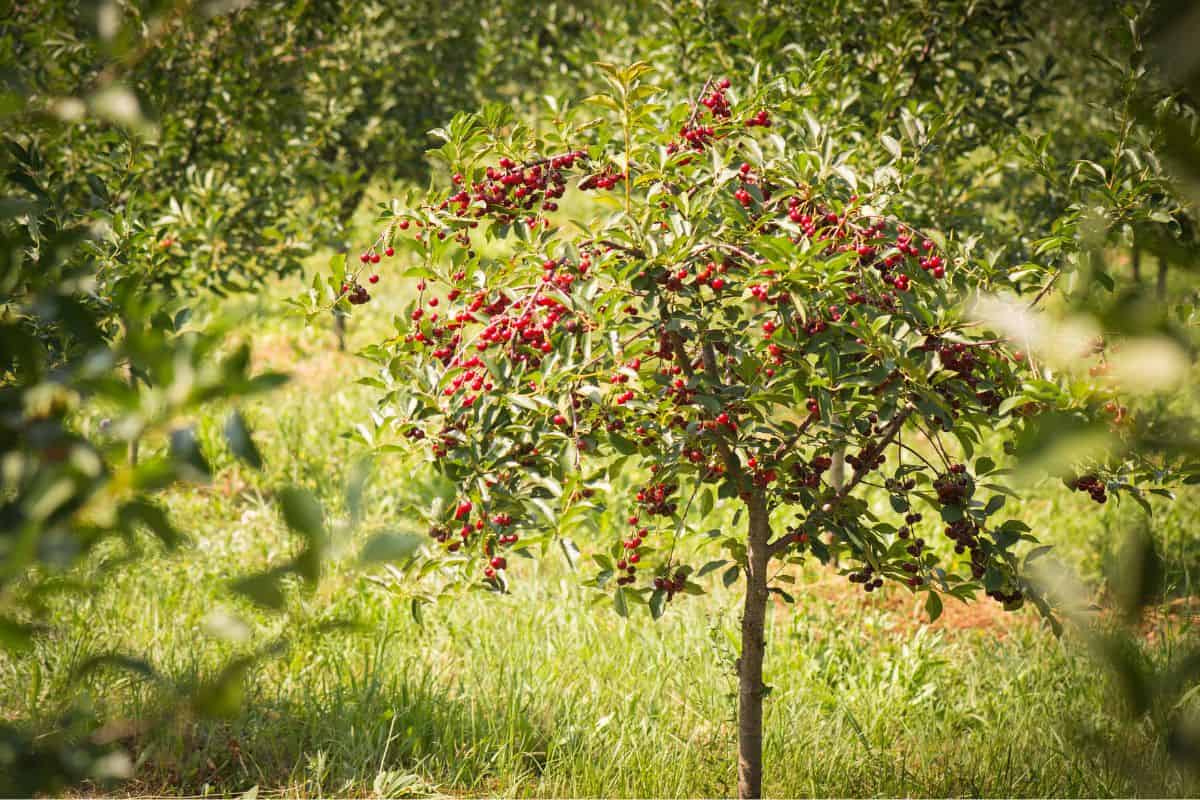
Fruit-bearing cherry trees will take 3 years to fully develop, but it will take around the fourth year before it starts producing fruit.
If you plant an already-fruiting tree in your garden, you can enjoy at least 50 quarts of cherries in a season.
On the other hand, cherry blossoms are relatively easy to grow and do not require much pruning unlike other flowering trees.
Just like fruit-bearing cherry trees, they can take up to 4 years before they fully mature. They should start growing their attractive blooms around this time.
Read: How Fast Do Cherry Trees Grow?
![Cherries on the tree just before harvest - Are Cherry Trees Messy? [Deciding If You Should Plant One In Your Yard]](https://gardentabs.com/wp-content/uploads/2022/08/Cherries-on-the-tree-just-before-harvest-Are-Cherry-Trees-Messy-Deciding-If-You-Should-Plant-One-In-Your-Y.png)
Final Thoughts
Cherry trees, regardless of the variety, are highly attractive and beneficial trees you can plant in your garden.
They provide seasonal and year-round appeal, and they can last for a long time especially if you know how to take care of them.
Make your garden more lush and vibrant and plant a cherry tree today!
